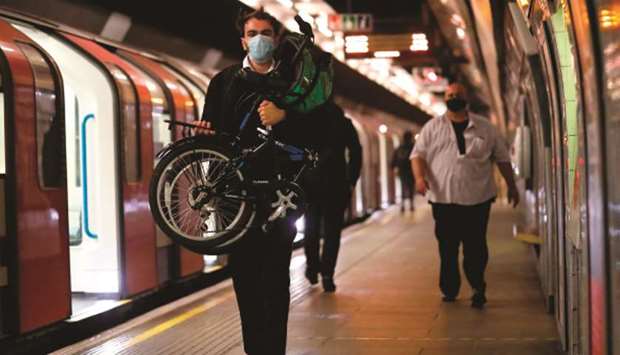The R value in England has risen to between 0.7 and 1, according to the government’s latest official estimates with some regions now at risk of seeing a rise in the number of infections.
The latest data suggests that the north-west is an area for concern and that some local authorities may have R-values — the rate of transmission — above 1, at which point the epidemic will begin to grow in these communities.
The estimates come as data from the Office for National Statistics suggested Covid-19 cases have fallen significantly in recent weeks,, with the number of people infected in England roughly halved in the second half of May.
The snapshot infection survey, covering the last two weeks in May, found that during that period an estimated 53,000 people were infected at any time.
This puts the daily infection rate at 5,600 compared with almost 8,000 in last week’s figures.
Peter Benton, the director of population and public policy operations at the ONS, said: “That, we think, is a real reduction in the number of people being infected.”
Previously, the ONS had said the trend looked flat and stable, but as more data has accumulated a downward trend is now evident, the analysis said.
However, Benton said it remained a concern that of those who had tested positive in the study so far, only 30% had reported experiencing any symptoms either when the swab was taken or the weeks before or after, suggesting that in the majority of cases, people may be unaware they are infected.
“Whilst the rates are going down … we’re still finding about 70% of those testing positive aren’t reporting any symptoms either at the visit when they have a swab or the visit before and after,” said Benton. “It does mean there’s a risk that a number of us might be out and about, positive, infectious and don’t know it.”
Those working outside their homes were found to be three times as likely to test positive, and those working in patient-facing healthcare roles had a six-times greater risk of infection.
Keith Neal, emeritus professor of the epidemiology of infectious diseases at the University of Nottingham, said the risk to those in patient-facing jobs was an important finding. “This significantly higher figure suggests that a significant part of the current Covid-19 epidemic may be an infection control issue rather than a series of community outbreaks,” he said. “The control strategies are different in hospitals and care homes, which require infection control, whilst community transmission requires social distancing and contact-tracing.”
The ONS snapshot data appears to show a steeper downward trend than Public Health England reports of new confirmed cases and hospital admissions.
Although most regions have shown a downward trajectory, in some areas the trend has only been marginal and the overall reproduction number, R, has been hovering close to 1.
The latest analysis by the London School of Hygiene and Tropical Medicine’s modelling team suggests that the current halving rate for the epidemic in the UK is about two months and that nationally R is 0.9-1.

A commuter wears a face mask as he walks on the platform of a tube station in London yesterday as lockdown measures are eased during the novel coronavirus pandemic. Face coverings will soon be compulsory for people wanting to travel on public transport in England to limit the spread of coronavirus.


